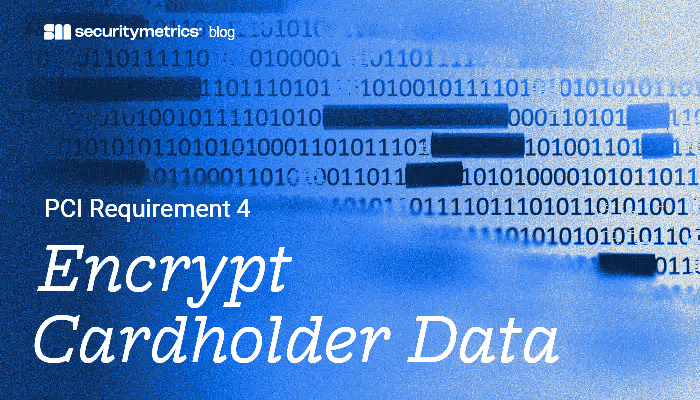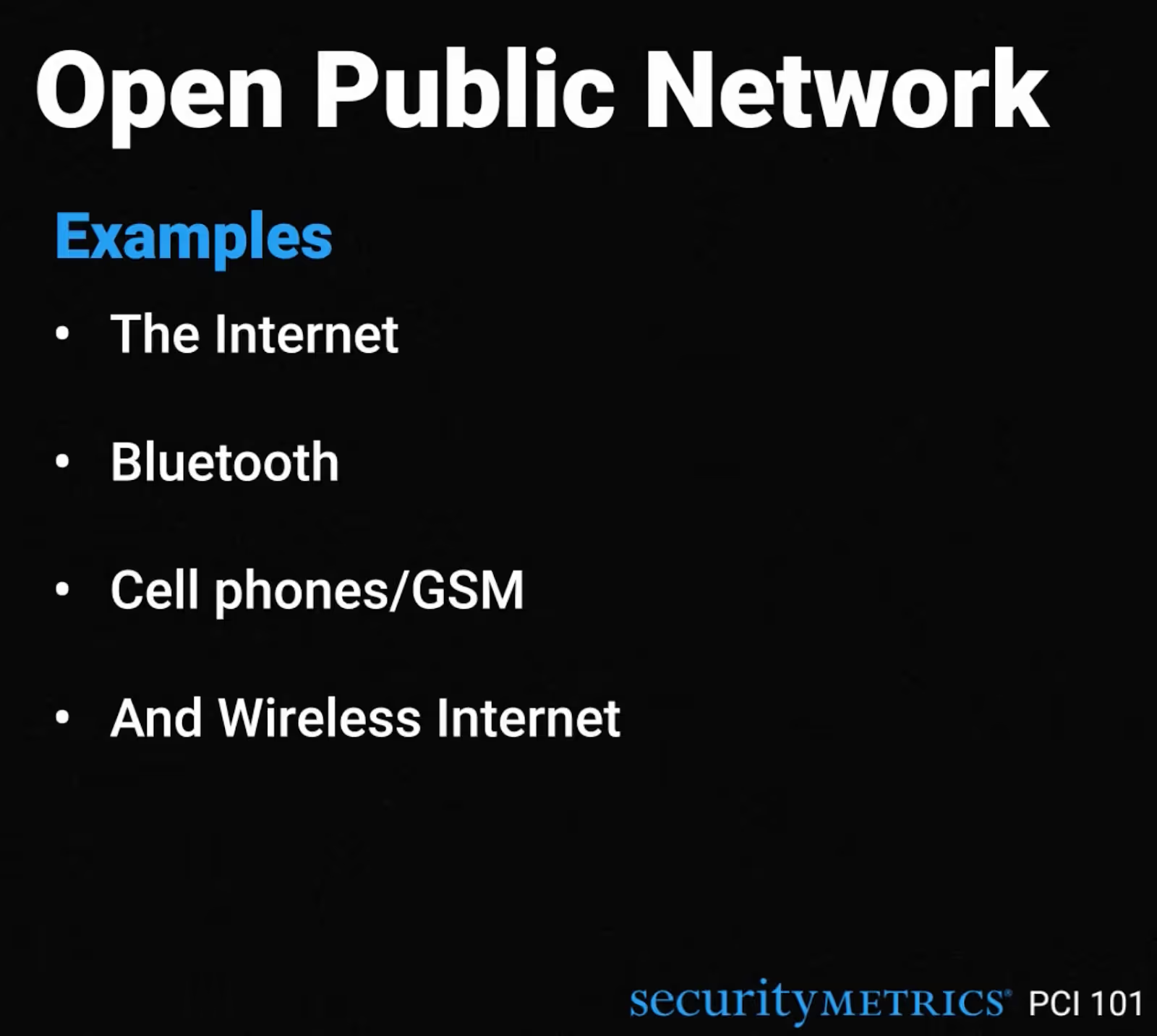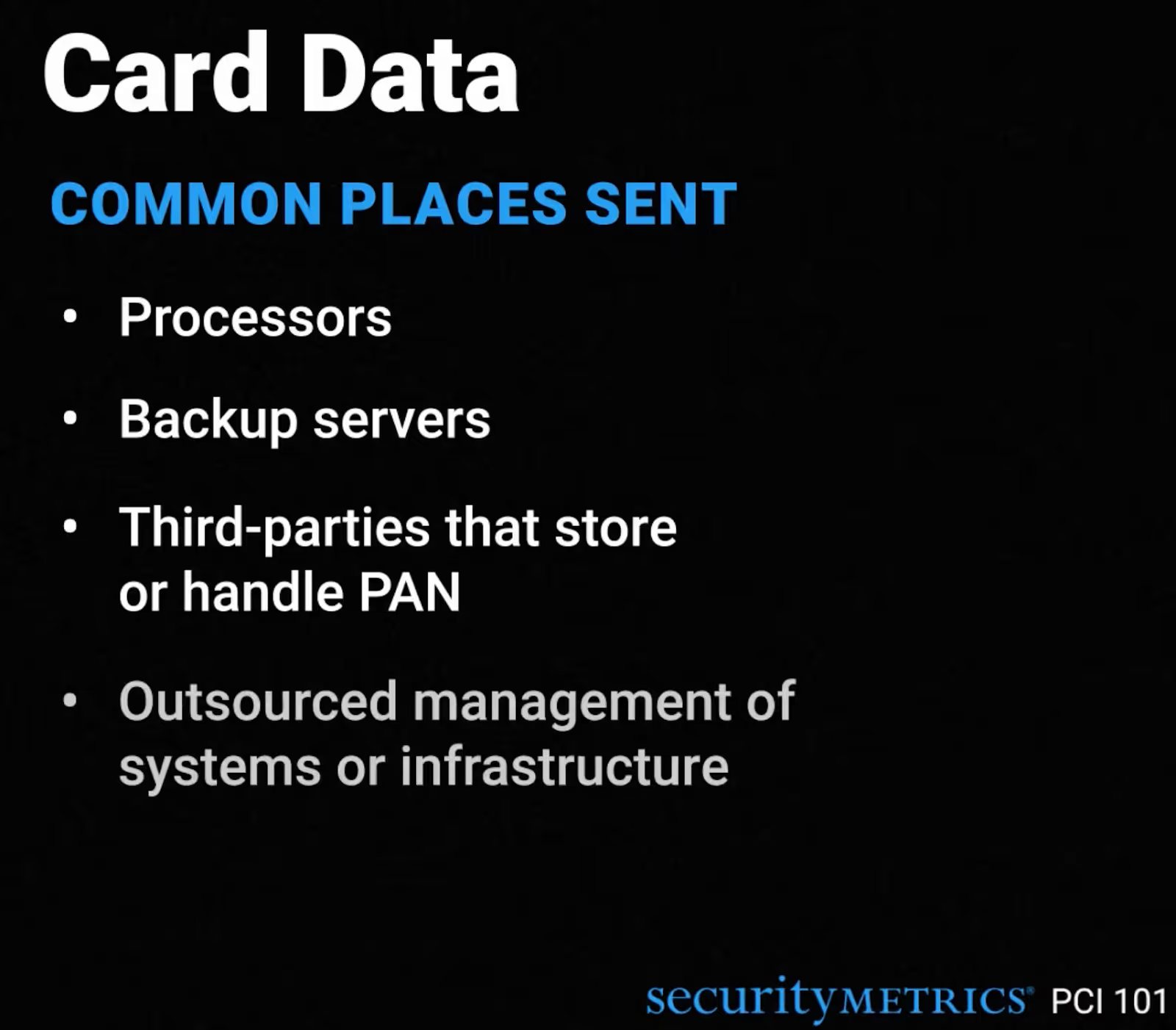PCI DSS Requirement 4 focuses on protecting stored and transmitted card data.

What do you do with your card data once you receive it? How is it transmitted to other areas? Are you securing these areas? These are all questions that can be related to PCI Requirement 4.

This requirement covers secure data transmission, especially when doing it over open and public networks. Businesses should be aware of how their card data is transmitted and through which networks.
“Build on the data flow diagrams discussed in the tips in Requirement 3.3. Know exactly where CHD is coming from and being sent to, inside and outside of your organization. Make sure your CHD is encrypted when transmitted over open public networks using strong and industry-accepted encryption technologies.”
(Ben Christensen, SecurityMetrics Senior Security Analyst CISSP | CISA | QSA)
Check out this PCI Requirement Four video for a concise summary of what you need to know.
You need to identify where you send cardholder data. Information like Primary Account Numbers (PAN) and magnetic stripe data should be stored securely and be encrypted. Some common places PAN is sent include:
See also: How Much Credit Card Data do You Store? (It’s More Than You Think.)
“Some organizations may have a large number of TLS certificates. Start inventorying those now so that you can create a good method to start tracking their strength and expiration status. ” (Ben Christensen, SecurityMetrics Senior Security Analyst)
If your business is using SSL/TLS, you should stop and update as soon as possible. These latest versions of web coding have several vulnerabilities. You should contact your terminal providers, gateways, service providers, and acquiring bank to see if the applications and devices you use have this encryption protocol.

Applications that use SSL/TLS may include:
If you need to keep using SSL/TLS, here are a few tips to protect your data:
If you have existing implementations of SSL and early TLS, you need to have a Risk Mitigation and Migration Plan in place. This document will help you detail your plans for migrating to a secure protocol and the controls you have in place to reduce the risk.
See also: SecurityMetrics PCI Guide
See also: DROWN Attack and SSL: What You Need to Know
There are a few things you can do to make sure you’re meeting PCI Requirement Four, including:
Here are a few other things to consider when fulfilling Requirement 4:
Remember, it’s important to keep your data safe while you're storing and transmitting it. Make sure your web encryption is updated and all possible vulnerabilities are mitigated, as this is one way to ensure data protection.
Need help getting PCI compliant? Let’s see how you’re doing so far!